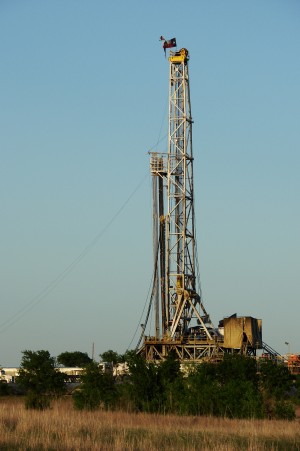Fracking Contaminated Water Supply, EPA Says
The Environmental Protection Agency (EPA) released draft findings of its investigation of contaminated water in Pavillion, Wyoming today. The agency investigated allegations against a drilling company, Encana, which uses a process called hydraulic fracturing, or “fracking,” (where a mixture of water, chemicals and sand is pressure-blasted deep underground to create fissures that release oil and gas deposits). This is the first time a federal investigation has made a connection between fracking and contaminated water supplies.
The EPA bored two deep wells to monitor water in the aquifer, and found “compounds likely associated with gas production practices, including hydraulic fracturing,” the agency said. They found “synthetic chemicals, like glycols and alcohols consistent with gas production and hydraulic fracturing fluids, benzene concentrations well above Safe Drinking Water Act standards and high methane levels.” The EPA noted that because of the geology of the area and how close the wells are to ground water, contaminating the aquifer and water supply over time is a concern.
EPA also updated its sampling of Pavillion area drinking water wells, which it had previously tested last year. They found methane, petroleum hydrocarbons “and other chemical compounds,” according to the EPA. “The presence of these compounds is consistent with migration from areas of gas production,” the agency said, and the levels of contaminants detected were “generally below established health and safety standards.”
Last year, the U.S. Department of Health and Human Services’ Agency for Toxic Substances and Disease Registry looked at the EPA’s data from some of the public and private wells and recommended that people not use the water for drinking or cooking, and ventilate their bathrooms when showering.
Pavillion is a major fracking site in Wyoming. More than 200 new wells have been drilled there in the last decade. But the town is small, with just 165 people. The EPA says that fracking there takes place “in and below the drinking water aquifer and in close proximity to drinking water wells,” which is different from many other fracking sites in the country.
“EPA’s highest priority remains ensuring that Pavillion residents have access to safe drinking water,” said Jim Martin, EPA’s regional administrator in Denver in a release. “We will continue to work cooperatively with the State, Tribes, Encana and the community to secure long-term drinking water solutions.”
Next week, the Railroad Commission of Texas, which oversees drilling in the state, will consider how to implement rules that require drilling companies to disclose what chemicals they use in fracking, a law that was passed by the state legislature earlier this year.
The EPA has released its findings for public comment today and will submit them to a scientific panel independent of the agency for review. More information is available on the EPA’s website for the investigation.
UPDATE: A spokesperson for the EPA said that the agency is also “investigating potential impacts from oil and gas drilling at a number of places across the U.S.” They are looking at seven other case studies as part of an ongoing scientific investigation. One of those case studies is on the Barnett Shale in Denton, Texas. The EPA is investigating the possibility of well contamination and spills and runoff there.




